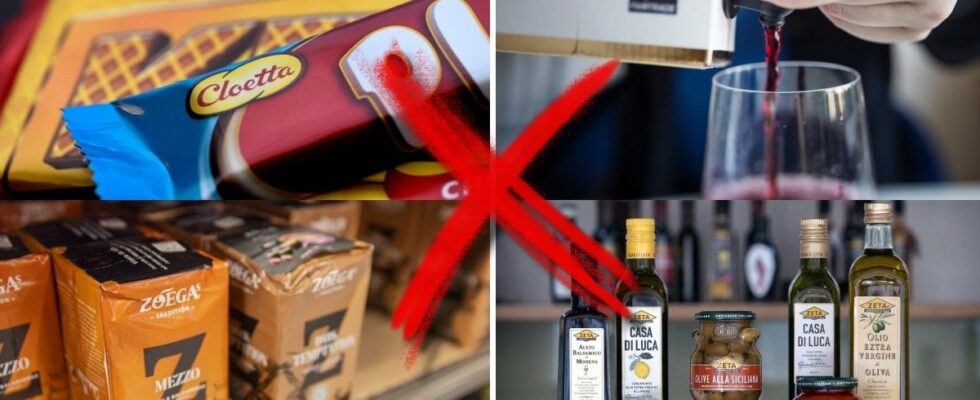Do you usually buy a chocolate cake, coffee powder, potatoes or olive oil when you visit ICA, Coop, Willys or another grocery store?
It may soon be a thing of the past, say scientists who warn of the effects when climate change wreaks havoc with crops and threatens our food supply.
News24 has now compiled five popular food items that may risk disappearing from grocery stores in the near future, as the climate changes.
DON’T MISS: The popular product comes to Sweden – the customers are furious
1. Chocolate
The item may disappear if: 30 years.
Marabou, Fazer, Plopp and biscuit chocolate – yes, the people’s favorites on the snack shelves are estimated to be under threat as the main ingredient cocoa becomes increasingly rare.
In the aftermath of the worst cocoa crisis in over 60 years, the price of cocoa approached 9,000 dollars per ton in the spring of 2024. The reason behind? Worse harvests from major producing countries such as the Ivory Coast and Ghana, which today account for around 60 percent of global cocoa production, according to Fairtrade Sweden.
In 2018 warned The evening paper because all cocoa may run out completely in 30 years. This because of it will be a warmer climate, which does not favor the cultivation of cocoa beans – which thrive in rainforest-like conditions such as those near the equator.
Chocolate is the popular sweet that is in danger of disappearing for good.| Photo: Jessica Gow/TT2. Coffee
The item may disappear if: Halved production capacity in 64 years.
Cacao isn’t the only brown bean that’s at risk of running out – even coffee may be running out.
Globally, the demand for coffee is expected to double by the year 2050, while only half of the arable land is expected to be usable within the same time period, writes Fairtrade in its “Coffee report” from 2023.
For the coffee growers, the negative development is already clear today. In the same report, nine out of ten Latin American coffee growers predict that the harvest will have deteriorated significantly by the year 2050.
The reason behind it is increased temperatures and fewer and fewer cold nights, which means that the wild Arabica bushes, whose beans are often used to make coffee, are at risk of becoming extinct, writes The evening paper. If development continues at the same rate, a halving of coffee cultivation is expected in 2088.
Coffee production may have halved in 64 years | Photo: Simon Rehnström/SvD/TT3. Olive oil
The item may disappear if: Time span missing.
Maybe it will be rapeseed oil in the future?
Between 2022 and 2023, the EU’s total production of olive oil decreased by 26 percent compared to the previous year, according to European Commission. The lowest level since the mid-1990s was measured last year, where the reduction ended up at 39 percent.
In order to produce the green olives needed to press the olive oil, temperatures of around 5-15 degrees are required during the colder months of the year – something that could become difficult with the estimated 7-degree increase over the next 80 years, according to British Royal Meteorological Society.
A specific year for when olive oil may run out is not mentioned in the study, but according to the researchers, Greek oil producers could become unprofitable as early as 2031.
Olive oil production decreased by over 39 percent between 2023 to 2024 | Photo: 4. Potatoes
The item may disappear if: 40 years, in specific regions.
Climate change is seen as a serious threat to potato cultivation, with rising temperatures that, among other things, force potato growers in Peru – Latin America’s largest potato producer – up into the mountains in search of coolness, writes IPS. According to Rene Gomez, researchers for the International Potato Center (CIP), the region has about 40 years left before potato cultivation disappears completely.
Even in Sweden, the harvest has been struggling for several years. Swedish Radio has previously reported on the risk of a potato shortage when many crops were completely destroyed by the rain in 2023 and 2023.
Johan Nilsson/TT5. Grapes
The item may disappear if: Time span missing.
If the wine pigeons cease to exist, there will probably be far more people than just the fruit lovers who will be sad – even all wine fans can say goodbye to their favourite.
Extreme weather conditions from early frosts, heavy rainfall and drought have meant that global wine production has plummeted to its lowest levels since 1961, writes The Guardianwith a decrease of 7 percent annually. Fires and droughts hit the vineyards hard almost every summer, reports say Today’s Industry – something that can be devastating for wine production in the long run.
Climate change has meant that the wine quality may also not be the same as you expect. According to the newspaper Wine Searcher the majority of French wine producers have been caught watering down their wine in order to mitigate high alcohol levels after the grapes have ripened under high temperatures.
The grapes, and thus the wine, are threatened by widespread drought Photo: Fredrik Sandberg/TTREAD MORE:
Explosion at Coop – one to hospital
Popular foods are expected to soar in price
